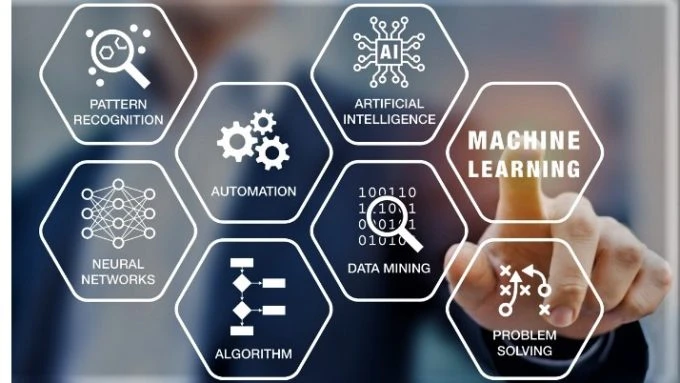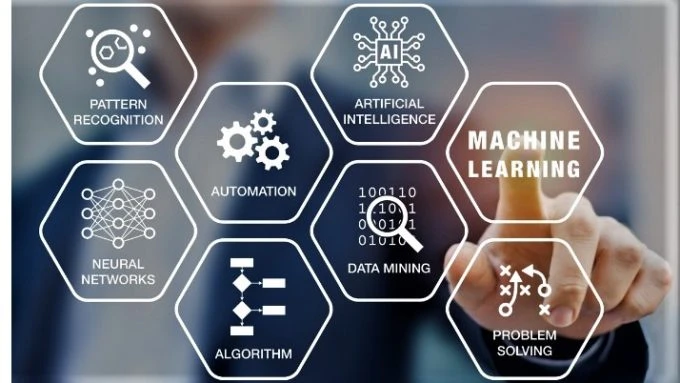Test AI on YOUR Website in 60 Seconds
See how our AI instantly analyzes your website and creates a personalized chatbot - without registration. Just enter your URL and watch it work!
Beyond Translation: The Complex Challenge of AI Localization
This experience illustrates the fundamental challenge of AI localization: it's not merely about converting text from one language to another. True localization requires adapting artificial intelligence systems to function naturally within entirely different cultural frameworks, understanding nuanced communication styles, cultural references, and societal expectations that vary dramatically across regions.
As chatbots and virtual assistants become increasingly central to how businesses interact with global customers, the stakes for getting localization right have never been higher. Companies are discovering that poorly localized AI can damage brand reputation, create frustration, and even lead to significant business losses in international markets. Conversely, thoughtfully adapted systems can create authentic connections that feel native to users around the world.
"The difference between translation and localization is the difference between being understood and being embraced," explains Dr. Mei Zhang, who leads cross-cultural AI research at a major technology company. "A well-localized chatbot doesn't just speak your language—it understands your cultural context, communicates in familiar patterns, and respects your cultural values."
This comprehensive approach to localization represents one of the most significant challenges—and opportunities—in the evolution of artificial intelligence systems today.
The Technology Powering Cross-Cultural AI
Neural machine translation (NMT) has revolutionized language conversion capabilities. Unlike earlier statistical approaches, modern NMT systems capture deeper linguistic relationships and context, producing more natural-sounding translations. These systems continue to improve through exposure to diverse language data, gradually narrowing the gap between machine and human translation quality.
Language-specific large language models (LLMs) trained directly on non-English corpora are replacing the traditional approach of building primarily English-language models that are later adapted. Companies are increasingly investing in models trained from the ground up on languages like Mandarin, Hindi, Arabic, and Spanish, resulting in more authentic understanding and generation capabilities in these languages.
Cultural context engines analyze and identify culturally specific elements in conversations—including idioms, cultural references, humor, and politeness levels—and adapt responses accordingly. These systems help chatbots recognize when literal translation would miss the intended meaning or could potentially cause offense.
Multilingual voice recognition has improved dramatically, with systems now capable of understanding heavily accented speech and code-switching (mixing multiple languages in conversation), which is common in multilingual societies. The ability to process natural speech patterns rather than requiring users to adopt artificial speaking styles is critical for user acceptance.
Multimodal understanding allows systems to interpret not just text and speech but also visual and interactive elements that may have different meanings across cultures. For example, the meaning of specific gestures, symbols, or images can vary dramatically between regions.
I spoke with Rajiv Mehta, CTO of a startup specializing in AI localization, who emphasized the interconnected nature of these technologies: "The breakthrough isn't any single technology but how these components work together in real-time. Our systems are constantly making micro-adjustments based on linguistic cues, cultural context, user behavior patterns, and even regional news events that might affect how certain phrases are interpreted."
The most advanced localization platforms incorporate feedback loops that continuously improve performance based on user interactions across different markets. This allows systems to adapt to evolving language usage and cultural shifts rather than relying on static translations that quickly become outdated.
Beyond Language: Cultural Dimensions of AI Localization
Communication directness varies significantly across cultures. In many Western contexts, particularly American business settings, direct communication is valued ("get to the point"). Conversely, many East Asian and Middle Eastern cultures employ more indirect communication patterns that prioritize relationship-building and contextual understanding before addressing the main topic. Chatbots that fail to adapt to these differences often come across as either rudely abrupt or frustratingly vague.
Formality levels and hierarchical awareness are crucial in many languages that have built-in formality markers, such as Japanese (keigo), Korean (honorifics), or the T-V distinction in romance languages (tu/vous in French). A chatbot using the wrong formality level can seem disrespectful or inappropriately casual depending on the context and relationship.
Cultural references, idioms, and humor rarely translate directly. A chatbot that peppers its responses with baseball metaphors will connect with American users but confuse those in markets where the sport has little cultural relevance. Similarly, humor varies dramatically—what's amusing in one culture may be bewildering or offensive in another.
Visual and design elements, including color associations, symbols, and layout preferences, carry cultural meaning that impacts user experience. In China, for example, a financial chatbot using red (associated with prosperity) will be perceived differently than in Western markets where red often signifies danger or losses in financial contexts.
Time perception and pace expectations differ significantly. Some cultures expect quick, efficient interactions focused on immediate task completion, while others value more relationship-building and contextual discussion before addressing tasks.
Sarah Kim, who leads a global team developing localized customer service AI, shared an illustrative example: "We initially designed our banking assistant to be friendly and somewhat casual for the US market. When we expanded to South Korea, even with perfect Korean translation, customer satisfaction was low. We discovered that Korean customers expected more formality and explicit acknowledgment of their status. Once we redesigned the personality and interaction flow—not just the language—satisfaction scores increased dramatically."
The most sophisticated localization approaches now incorporate frameworks like Hofstede's cultural dimensions or the Lewis Model to systematically address these variations, allowing chatbots to adapt not just their vocabulary but their entire interaction approach based on cultural context.
Real-World Success Stories and Failures
A global e-commerce platform saw conversion rates increase by 47% in Japan after redesigning their shopping assistant to incorporate culturally appropriate levels of detail and certainty. The original version, designed with Western decisiveness in mind, had been perceived as suspiciously vague by Japanese consumers who expected more comprehensive product information and social proof before making purchasing decisions.
An international travel company created a virtual concierge that dynamically adapts its communication style based on the user's home culture and destination. When Japanese tourists use the service to plan trips to Brazil, for example, the system employs a uniquely blended approach that helps bridge cultural expectations around scheduling, punctuality, and social activities—providing cultural context alongside practical information.
A healthcare chatbot developed in the US failed dramatically when deployed in several Middle Eastern countries because it didn't account for cultural attitudes about discussing certain medical topics directly. After incorporating region-specific approaches to sensitive health issues and aligning with local healthcare practices, user engagement increased eightfold.
A financial services chatbot succeeded in Latin American markets by incorporating cultural attitudes toward personal relationships in business contexts. Rather than immediately focusing on transactions like its North American counterpart, the localized version begins interactions with appropriate relationship-building conversation and maintains a personalized memory of previous interactions.
I interviewed Miguel Santana, whose team developed a multilingual customer service system for a major airline: "Our breakthrough moment came when we stopped thinking about creating a single chatbot that speaks multiple languages and started developing culturally distinct personalities that share knowledge. Our Brazilian Portuguese version isn't just translating our English bot—it has a different conversational flow, different humor, different relationship-building patterns, all while maintaining consistency in the actual service information."
These examples highlight a crucial insight: successful localization often requires fundamentally rethinking interaction design rather than simply translating an existing experience. Companies that approach localization as a comprehensive redesign process rather than a translation task consistently achieve better results across markets.
Testing and Validating Cross-Cultural AI
Cultural consultants and native speakers play a crucial role in evaluating not just linguistic accuracy but cultural appropriateness, communication style, and contextual understanding. Many organizations now maintain networks of cultural advisors who can provide nuanced feedback on how AI systems are perceived in specific markets.
Scenario-based testing with culturally specific situations helps identify where systems might fail to understand cultural context. For example, testing how a chatbot handles holiday-related requests during Lunar New Year, Ramadan, or Diwali can reveal cultural blind spots that wouldn't be apparent in generic conversations.
Sentiment analysis customized for different cultures helps catch subtle issues in user satisfaction that might not be explicitly stated. Expression of dissatisfaction varies dramatically across cultures—some users may express frustration directly, while others communicate it through more subtle cues that standard sentiment tools might miss.
Comparative A/B testing across markets can reveal unexpected variations in preference and effectiveness. A chatbot feature that drives high engagement in one region might actually reduce usage in another due to different expectations or communication norms.
Continuous feedback loops that incorporate actual user interactions are particularly valuable for localization. Systems improve based on real conversations rather than theoretical assumptions about how users in different cultures might interact.
Rashid Al-Mahmood, who leads localization testing for a global tech company, explained their approach: "We developed what we call 'cultural edge cases'—scenarios specifically designed to test cultural boundaries. For example, how does our system handle a request that would be routine in one culture but potentially inappropriate in another? These edge cases have been incredibly valuable for identifying subtle localization issues that traditional testing would miss."
The most sophisticated organizations implement testing frameworks that specifically evaluate cultural dimensions like directness, formality, contextual understanding, and appropriateness of cultural references. This structured approach helps ensure that localization efforts address the full spectrum of cultural adaptation rather than focusing exclusively on language accuracy.
Test AI on YOUR Website in 60 Seconds
See how our AI instantly analyzes your website and creates a personalized chatbot - without registration. Just enter your URL and watch it work!
Ethical Considerations in Cross-Cultural AI
Representation in training data is a fundamental challenge. Many AI systems are trained primarily on English-language content from Western contexts, creating inherent biases when applied globally. Organizations are increasingly investing in diverse data collection to ensure systems understand multiple cultural perspectives.
Cultural appropriation concerns emerge when AI systems adopt cultural elements without appropriate context or respect. Companies must navigate the line between authentic localization and superficial or potentially offensive adoption of cultural characteristics.
Value conflicts between AI design principles and local cultural norms create complex ethical dilemmas. For example, a commitment to gender equality embedded in an AI system might conflict with local gender norms in certain markets. Organizations must decide whether and how to adapt their systems to align with local values that may differ from their own corporate principles.
Privacy expectations vary significantly across cultures, affecting how personal data should be collected, stored, and utilized in different markets. What's considered appropriate data use in one region may feel invasive in another.
The potential for cultural homogenization exists if dominant AI approaches simply overlay superficial cultural elements onto fundamentally Western interaction models. True localization requires deeper structural adaptation to diverse cultural frameworks.
Dr. Fatima Rahmani, an AI ethics researcher specializing in cross-cultural technology, shared her perspective: "There's a tension between adapting to cultural differences and potentially reinforcing problematic aspects of any culture. Organizations need thoughtful frameworks for deciding which cultural elements to adapt to and which of their own values remain non-negotiable across all markets."
Leading organizations in this space have developed ethical guidelines specifically for cross-cultural AI deployment that address these tensions. These frameworks typically include principles for respectful cultural adaptation, transparent disclosure of AI capabilities and limitations across languages, and clear processes for identifying and addressing potential harms that might affect specific cultural groups differently.
Strategic Approaches to AI Localization
Centralized development with localization layers maintains a core AI engine while adding market-specific adaptation layers. This approach provides consistency across markets but may struggle with deep cultural adaptation. It works best for technical domains where cultural variation has less impact on core functionality.
Regionally autonomous development creates separate AI systems for different markets or regions, allowing for deeper cultural adaptation but potentially creating inconsistencies and duplicating development efforts. This approach is often adopted by organizations where regional business units operate with high autonomy.
Hybrid architecture combines centralized knowledge bases with decentralized conversation models. This increasingly popular approach maintains consistent information across markets while allowing conversation patterns, personality, and interaction styles to vary based on cultural context.
Collaborative development involving local teams throughout the creation process (rather than adding localization as a final step) leads to more authentic adaptation. Organizations find that involving local experts from the beginning results in systems that require less retrofitting later.
Phased market entry strategies allow organizations to learn from initial markets before expanding. Rather than simultaneously launching in dozens of markets, companies achieve better results by deeply adapting to a few key markets, learning from the experience, and applying those insights to subsequent expansions.
Elena Kowalski, who oversees global AI strategy for a multinational corporation, described their evolution: "We moved from what I'd call 'localization as translation' to 'localization as co-creation.' Our regional teams aren't adapting a predefined experience—they're helping create experiences grounded in their cultural context while sharing a common technological foundation. This shift required organizational changes, not just technological ones."
The most successful organizations view localization not as a technical challenge but as a strategic priority that influences product design from the earliest stages. This approach requires cross-functional collaboration between AI teams, regional business units, cultural experts, and local users throughout the development process.
The Future of Cross-Cultural AI
Zero-shot and few-shot learning capabilities are allowing AI systems to adapt more quickly to new languages and cultural contexts with minimal specific training. While still emerging, these approaches promise to make sophisticated localization possible for a much wider range of languages, including those with limited digital resources.
Real-time cultural adaptation is evolving from static regional models to dynamic systems that adapt based on individual user behavior, preferences, and specific contexts. Future systems may adjust not just to a user's language but to their personal communication style, cultural background, and situation.
Multimodal localization is expanding beyond text and speech to include gestures, visual elements, and interactive patterns that vary across cultures. This comprehensive approach creates more immersive and authentic experiences across cultural boundaries.
Preservation of linguistic and cultural diversity is becoming a focus as organizations recognize that AI systems can either contribute to cultural homogenization or help preserve and revitalize linguistic and cultural traditions. Some companies are explicitly designing their localization efforts to support endangered languages and cultural expression.
Community-driven localization approaches are emerging, where users from different cultural backgrounds contribute to improving and refining AI systems for their communities. This collaborative model helps address the limitations of top-down localization by incorporating diverse perspectives directly into system development.
Professor Jaime Rodriguez, who studies technological impacts on cultural diversity, offered this perspective: "The next frontier isn't just making AI work in different languages and cultures—it's creating AI that actually enhances cultural expression and cross-cultural understanding rather than flattening it. The organizations that approach localization as a creative cultural exchange rather than a technical problem will define the next generation of global AI."
These trends suggest a future where AI localization moves beyond functional adaptation to become a vehicle for authentic cultural expression and exchange, potentially helping bridge divides between different cultural frameworks while preserving what makes them distinct.
Conclusion: From Translation to Cultural Fluency
Organizations at the forefront of this field recognize that effective localization creates not just functional understanding but authentic connection. Their AI systems don't merely operate in different languages; they engage with users in culturally resonant ways that demonstrate respect for diverse communication styles, values, and expectations.
The challenges are substantial. Technical obstacles remain in developing systems that can naturally adapt across thousands of language variations and cultural contexts. Ethical questions about representation, appropriateness, and value alignment require ongoing attention. And organizational processes must evolve to incorporate diverse perspectives throughout development rather than treating localization as an afterthought.
Yet the potential rewards are equally significant. AI systems that achieve true cultural fluency can help organizations build authentic global relationships, preserve and celebrate cultural diversity, and create more inclusive technological experiences. At their best, these systems might even help bridge cultural divides, creating shared understanding across different perspectives.
As we look toward this future, the most promising approaches will likely be those that balance technological capability with cultural humility—recognizing that effective localization is not just about teaching AI to speak more languages but about creating systems that listen and adapt to diverse human expressions across our richly varied global culture.





